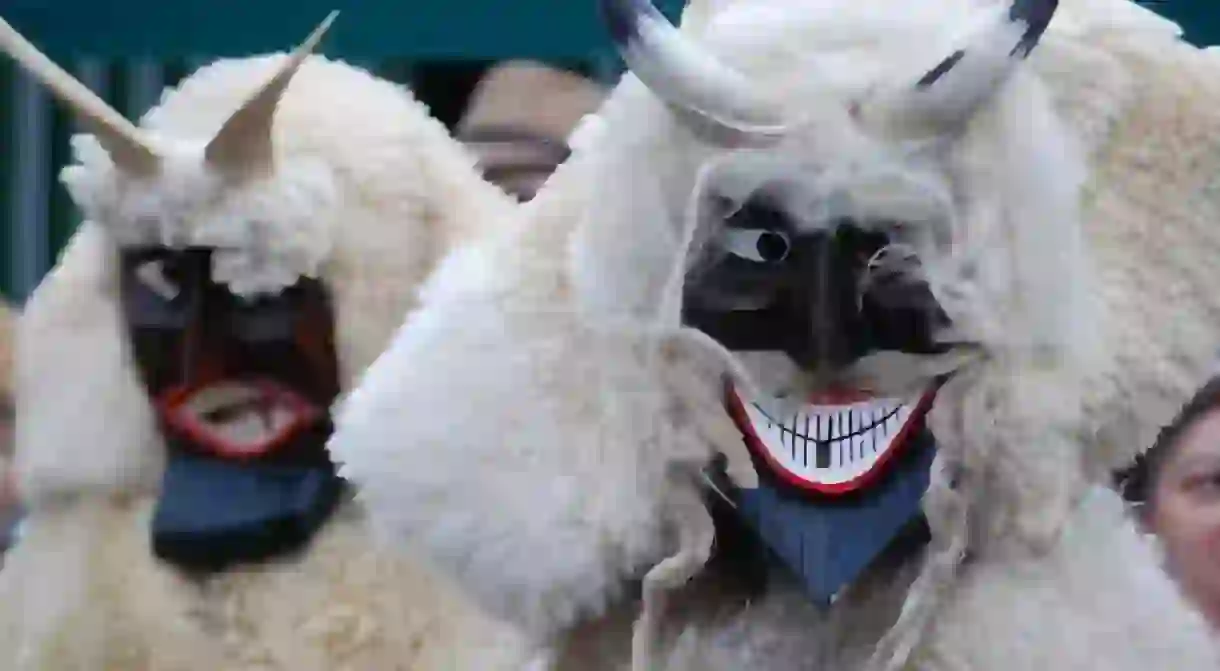8 Things You Need to Know About Busójárás, Hungary’s Biggest Carnival Festival

Every February, the Hungarian town of Mohács is taken over with revelry, mayhem, and celebration as the festival of Busójárás is celebrated during Farsang (Carnival) season. Check out these eight things you need to know about the festival.

1. It’s only held in Mohács.
Farsang is the name given to carnival season in Hungary, during which time a range of events are held across the country to scare winter away. Busójárás is the season’s main event, and its location is always the same: held in the town of Mohács, near Hungary’s border with Croatia, it is a celebration created by Mohács’ ethnic Croatian minority people, the Šokci.
2. Its origins are steeped in history.
According to legend, the festival is held to celebrate two things. The first is a successful attempt by the people of Mohács to scare away invading Turks. The story goes that during Ottoman occupation, the local people were forced to flee the town and hide in nearby swamps. One stormy night, on the advice of an old Šokac man, one such group donned scary masks and returned to Mohács, frightening the invading Turks away – who thought they were demons. Today, the festival is held to scare away winter and celebrate the arrival of spring.
3. Busójárás means Busó-walking.
The key part of the festival are the male Busós: local men wearing scary looking masks, representative of the original group of townsmen who took back their home. Today, the Busós take over the town, drinking and (playfully) chasing women.

4. It gets pretty crazy.
A celebration of life for the Šokci people, as well as a way to say goodbye to winter and hello to spring, the festival can get pretty rowdy. The Busós parade through the town wearing traditional carved masks, while there’s also folk music, dancing, and alcohol – lots of it!
5. It’s acknowledged by UNESCO.
In 2009, the festival gained a place on UNESCO’s Representative List of the Intangible Cultural Heritage of Humanity. Described as “more than a social event,” Busójárás was included for its social and cultural importance.
6. There are no rules.
Part of the excess surrounding Busójárás could be owed to the fact that during festival time, rules are discarded and anything goes. While this contributes to the party atmosphere, in the past it’s possible that this had more far-reaching results. It’s suggested that the Šokci people were able to thrive and survive as children were often conceived during Busójárás – and their lineage could not be questioned.

7. It lasts for a week.
The fun and games carry on for around one entire week, usually in late February. Stretching from Thursday until Shrove Tuesday, or Mardi Gras, the largest celebration occurs on Sunday – this is called Farsang Vasárnap (Farsang Sunday). Tuesday is also an important day in the schedule, as a large bonfire is lit in the main square, and a man made of straw is burned – this is called the Burial of Farsang.
8. You can’t avoid getting involved.
If you’re planning to head to Mohács to enjoy the festival as an uninvolved bystander, think again: it’s almost impossible to attend Busójárás without becoming a part of it yourself. From being doused in flour to being offered a drink by a Busó, a trip to the festival means a trip to participate!
Essential Information:
Dates: February 23 – February 28, 2017
How to get there? From Budapest, you can either rent a car or take a bus from Népliget Coach Station. In 2017, MÁV Nostalgia is launching a Busó Express train service. Departing from Budapest, the train will take those keen to experience the festival straight to Mohács on February 26th and will offer a party train atmosphere.













